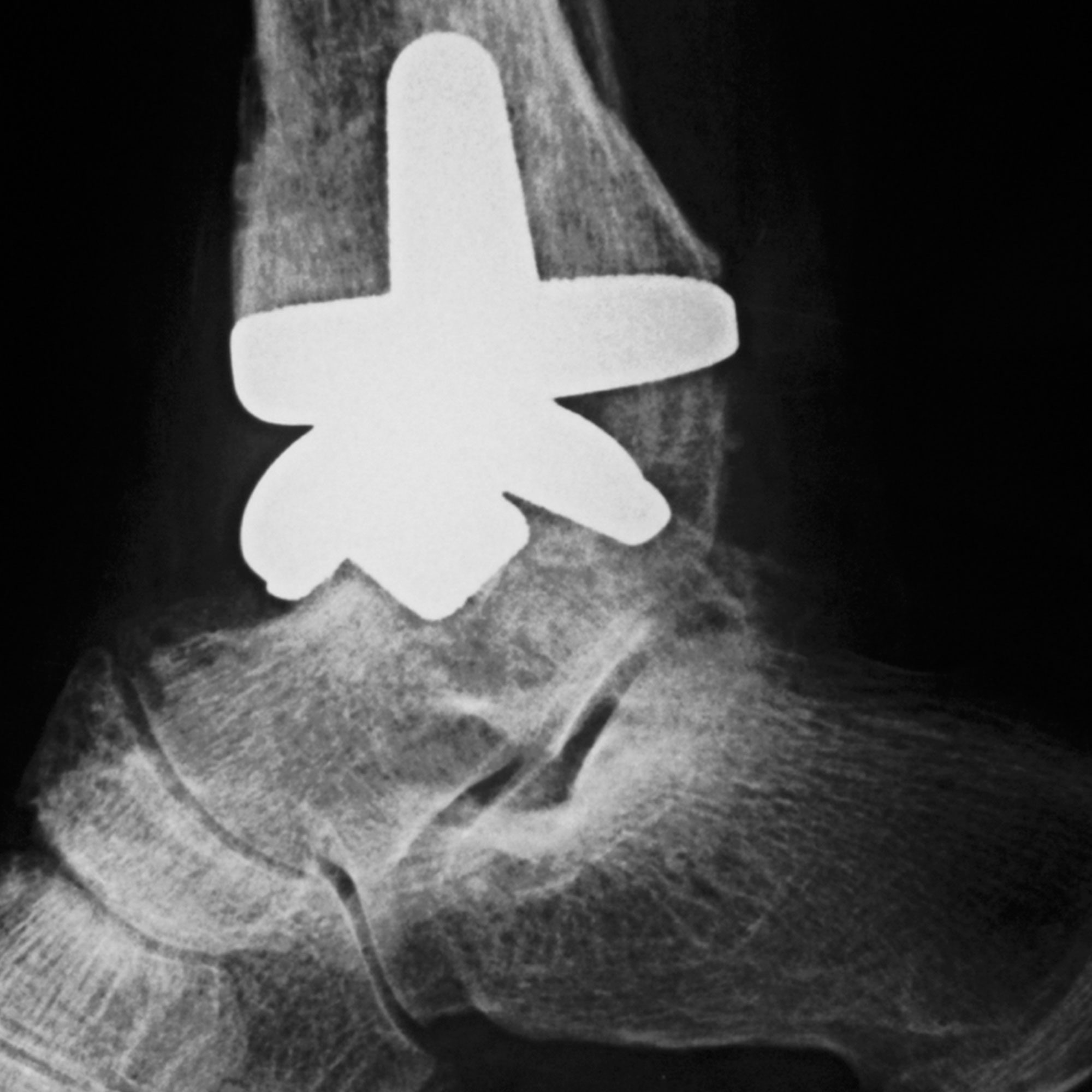Ankle osteoarthritis is the degeneration (debilitation) of the articular cartilage of the ankle. The most common causes are fractures involving the ankle, but it can also occur after chronic sprains, rheumatic diseases, foot deformities, infections, etc. The most frequent symptoms are pain, progressive deformity and inability to walk and carry out an active life.
Patients with mild osteoarthritis can be non-surgically treated, with the decreasing of the physical activity, in rocker-soled shoes, injections of cortisone or hyaluronic acid, antiinflammatories, chondroprotectives (such as glucosamine or chondroitin, and an ankle brace to reduce movement of the joint. If there is no improvement, surgery will be used. In moderate cases, arthroscopic surgery may be the best alternative by removing bone spurs and loose cartilage fragments. When indicated, the treatment may be followed by a joint distraction procedure with an external fixation device (arthrodiastasis). In most of the cases, the pain will be succesfully relieved.
In severe cases, when osteoarthritis destroys the whole cartilage the surgical possibilities include the artificial induction of joint ossification between the two bones via surgery (arthrodesis) or a total joint replacement (total ankle prosthesis). Arthrodesis is the most often used and the results are generally good. The pain is eliminated at the cost of fixing the joint, this causes the neighboring joints to have to bear heavier loads and over time it may be affected. The ankle prosthesis diminishes the pain without losing mobility. However, we have no long-term results with the current prosthesis. These devices last less than the ones in the hip and the knee, so they wouldn’t be indicated for young patients.







